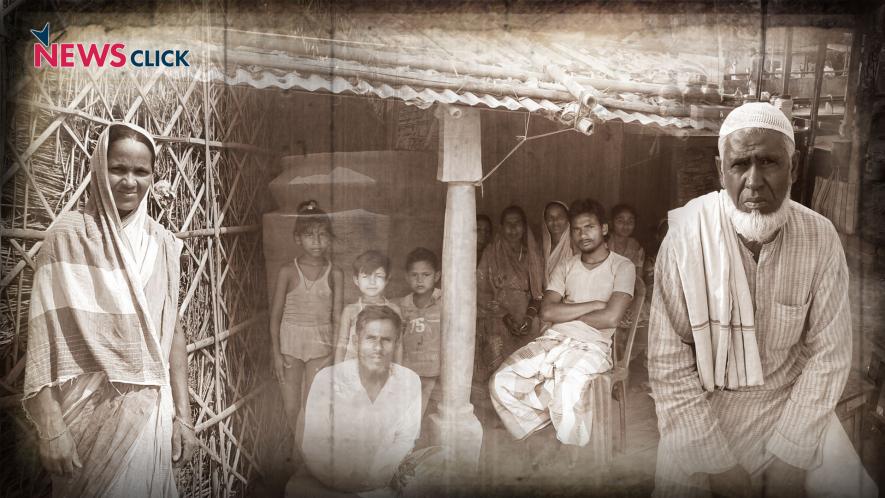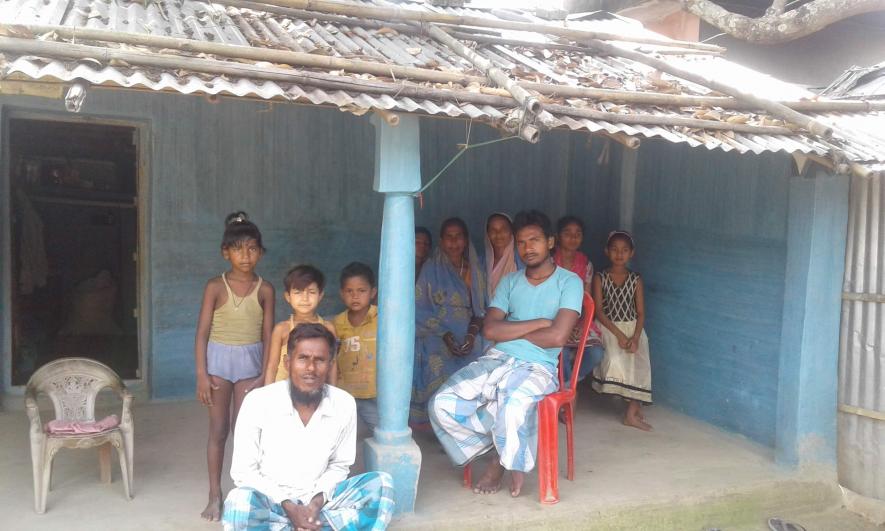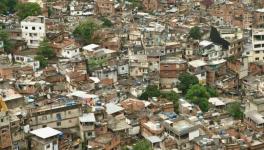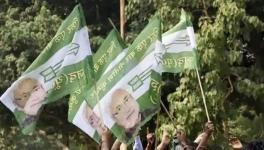Election 2019: Poverty, Unemployment and Migration Haunt Muslim-dominated Kishanganj

Images: Mohd Imran Khan
Dhumania (Kishanganj/Bihar): Alauddin and Mohd Farid, who are in their mid-50s, sit in the shadow of a big tree on a dusty road to relax after long work hours in the sun. As they chat with the other villagers, they discuss how the successive governments’ MPs and MLAs have done nothing for them over all these years. They do not hope for ‘achche din (better days)’.
As the electioneering picks up pace here – just four days ahead of the voting in Kishganganj – people have been showing little interest in voting and the elections.
Both Alauddin and Farid, like most of the small farmers of the Dhumania village, are poor. They live in thatched huts and short houses built with bamboo. The presence of the frail and anaemic women and the malnourished children gives it away that this is one of the India’s poorest and most backward districts, Kishanganj, which is also a Muslim-dominated area.
“All their [government’s] schemes are good only on the paper, not on the ground. Look at our condition. It is pathetic. Life is full of misery,” said Alauddin, who owns a little over one bigha land.
He expressed anguish over the lack of opportunities to earn livelihood. “We are struggling to manage a family of seven with a small piece of land. There is no other option.”
Dhumania, which is situated at about 16 km from Kishanganj town, is also a backward and an underdeveloped village. It is surrounded by maize crops and orchards. The village comprises three or four pucca houses, over 300 thatched huts and a small mosque. The only silver lining is that the hand pumps have replaced the old wells, and most of the villagers have constructed toilets inside their houses. However, they are still waiting for the government funds assured by the local administration.

Shamshad Alam with family.
A villager, Shamshad Alam, said that even the main road connecting the village to the nearby national highway is not in a good condition, while roads inside the village remains a dream till date. However, the village was electrified six-seven months ago.
Also Read: Elections 2019: In Bihar, Talk of MSP Remains on Paper for Most Farmers
Shamshad owns two bigha land, which is the only source of income for his family of six. “There is no other opportunity. Agriculture is not profitable; it just somehow helps us to survive.”
Mohd Adil, who is from Dhumania, works as a driver in Bengaluru. He visits his native village once or twice a year. “Not only the youth, but even the middle-aged people migrate to cities like Delhi, Mumbai, Bengaluru, Chennai or Ludhiana, in the absence of job opportunities locally.”
Mohd Kazim, who has also migrated in search of a job, told NewsClick that there is no primary or middle school in the village. “A school is situated at about 1.5 km from the village, near the main road (national highway). Minor children and teenaged girls are not comfortable in attending the school,” he said.
Tarique Anwar, who is a class XII student – a rarity in this village – said that two youths had completed their graduation, but both are unemployed so far. “Sooner or later, they will also migrate for a job”.
Flood-prone Kishanganj, part of Seemanchal region, has some of the worst development statistics not only in Bihar but in India. It has a per capita annual income of Rs 9,928 (as per the Economic Survey 2018-19) with a literacy rate of 57.04%. While the women illiteracy rate is as high as 84%, nearly 60% of the population is below poverty line. The dropout rate after high school is as high as 98%.
Experts in several studies have observed that the poor socio-economic condition is responsible for large-scale migration from Kishanganj.
He reveals that he has returned from Mumbai, where he works at a plastic factory. “If we would not have been poor, why would we migrate to earn livelihood? In our small village of 60 families, there is not a single home that does have at least one migrant worker,” he told NewsClick.
Mansoor Alam, who runs a shoe shop in Kishanganj town near the railway station said that the migration has improved the situation, particularly in the rural areas because of the cash brought back by the migrants.
As per the official Census 2011 and population data 2019, Muslims constitute 67.98% of Kishanganj’s population. After Kishanganj constituency that borders West Bengal and Nepal was created in 1971, only Muslim candidates have been elected here. Kishanganj is widely seen as a stronghold of the Congress.
Even in 1989 when there was an anti-Congress and pro-Janata Dal wave, Congress candidate M J Akbar had won the seat. The BJP had only once pocketed the seat when its candidate Shahnawaz Husain won in 1999, defeating Mohammad Taslimuddin of RJD. In 2004, Taslimuddin defeated Shahnawaz, forcing him to shift to the Bhagalpur parliamentary constituency.
Also read: Elections 2019: Polls Come and Go, No Progress for Mushahars of Bihar
Get the latest reports & analysis with people's perspective on Protests, movements & deep analytical videos, discussions of the current affairs in your Telegram app. Subscribe to NewsClick's Telegram channel & get Real-Time updates on stories, as they get published on our website.
























